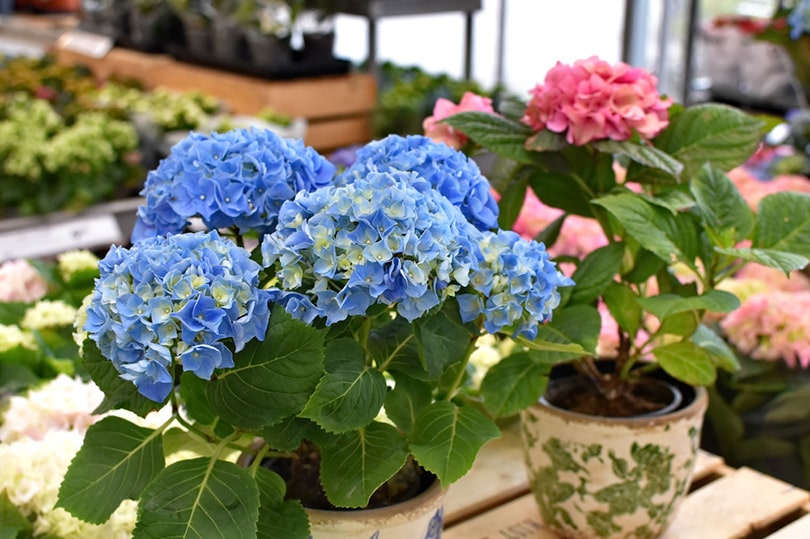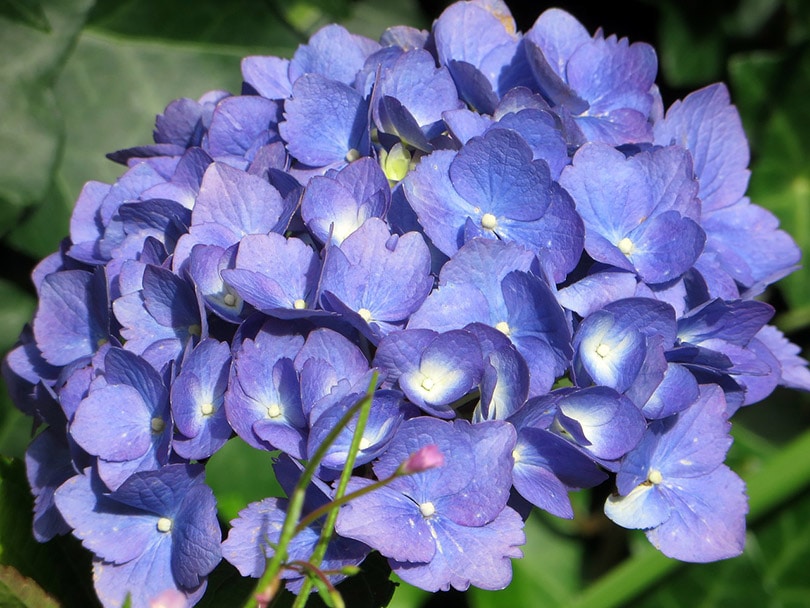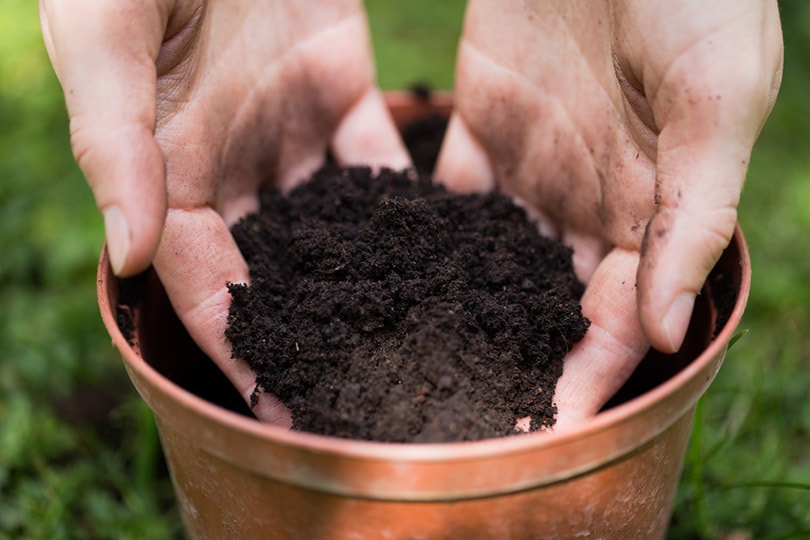Can You Grow Hydrangeas Indoors? Tips, Tricks & How-To Guide
-
Pete Ortiz
- Last updated:

The Hydrangea is a favorite indoor plant for many plant lovers. This attractive plant has beautiful flowers uniquely shaped like lace and can be a great addition to your home. In many houses and gardens, you can see small shrubs with lush blooms that dominate with rare pastel shades. Planting this stunning plant indoors can give your home a fairy-tale atmosphere.
This plant requires special care and specific growing conditions, though, so before you place such extraordinary beauty in your home, you must learn how to properly care for hydrangeas to have a healthy, happy plant.
Before You Begin
When deciding which perennial hydrangea to cultivate, make sure they have the right proportions for planting. Experts recommend seedlings of about 14 inches in circumference. They also suggest using a prepared soil mixture rather than garden soil, which can be too heavy. To ensure optimal growing conditions for hydrangeas, find an ideal spot on the porch or patio where they will get enough light. Keep in mind that exposing them to direct sunlight may burn the plant. The morning sun or afternoon shade would be a perfect time for these plants to thrive.
The How-To Guide on Growing Hydrangeas Indoors
1. Pick an ideal species for indoor growing
When planning to grow hydrangeas indoors, remember that not all species will be suitable for the indoor environment. Hydrangea Macrophylla is a species commonly recommended for growing indoors.
Some varieties of hydrangea can bloom multiple times over a year. These plants will bloom beautiful, colorful flowers at the beginning of the season and have late buds, continuing to bloom throughout the year.

2. Choose the correct pot size
Since the root system of this plant grows horizontal, spreading sideways, it would be best to choose a wide, spacious pot. The pot’s ideal size is about 2 feet. It is essential to follow the plant’s growth and replace the pots accordingly. If you notice your plant is growing rapidly, you may have to pick a larger pot to replant your hydrangea. The container should be one and a half times larger than the previous one. By repotting your plants regularly, you will ensure the healthy growth of the root system.
3. Pick the correct type of soil
Place a layer of rocks at the bottom of the pot to provide the soil with proper drainage and make sure your pot has drainage holes in the bottom. Start adding your soil mix, which should be quality potting soil instead of regular garden soil. Feel free to add a layer of compost to provide the soil with additional nutrients. If you are replanting your hydrangea, make sure to plant it in the same depth in the soil as it was previously.

4. Put your hydrangea in an ideal spot
Hydrangeas thrive in a well-lit area, but there should be no direct sunlight. Keeping it directly on the window sill is not recommended: the leaves will eventually become covered with bright-spotted burns. But even in the shade, the flower can’t develop, so it is essential to find an ideal spot.
Direct morning sunlight or the afternoon shade are the two best options for the hydrangea to thrive. During dormancy, this plant needs colder temperatures and coolness. You can then place it in the basement and water it when necessary. If you do not provide the right conditions for wintering hydrangeas, they will bloom again only a year later.
5. Water your hydrangea properly
Hydrangea is a plant that loves moisture. It is best to water it two to three times a week to encourage root growth. It should be watered regularly and thoroughly in summer, while in spring moderately, and in winter, it is watered only when necessary. From time to time, add lemon juice to provide the plant’s soil with enough acidity. With low acidity, hydrangea leaves begin to turn yellow. The solution is created by adding five drops of lemon juice per 33 ounces of water.

Maintaining Hydrangeas
During active growth, hydrangeas need feeding, which is best to apply once every 2 weeks. For this, you need fertilizer for flowering plants. Fertilizing the plant is best in February when the hydrangea begins to form new buds after dormancy. It is not recommended to feed the plant in winter.
It is believed that indoor hydrangea plants do not need pruning. On the contrary, pruning is crucial to maintaining a healthy plant. Thanks to pruning, the shrub will receive an attractive form and shape, and the entire plant will adequately distribute the nutrients obtained from the soil. It is best to prune the plant twice a year, in autumn and spring. In autumn, your hydrangea will lose its strength, so it is best to remove the weakened shoots. The stronger shoots should be cut by half the length. During spring, you can often remove overly elongated weak shoots. You can also prune the tops of the plant, which will allow you to grow additional sprouts and form a luscious shrub.
Common Problems When Growing Hydrangeas Indoors
When growing hydrangeas indoors, you may have some difficulties. A common problem that occurs with hydrangeas is yellow leaves. The reason is often improper care, insufficient watering, or low oxygen content in the soil. The plant will recover as soon as you eliminate these mistakes.
The hydrangea will start to dry very quickly if you forget about watering and spraying. The reason may be a lack of nutrients in the substrate or damage to the roots during transplanting. If the cause was an injury to the root system, it is unlikely that such a shrub will grow well.
If the hydrangea does not bloom, it was not provided with a good rest in winter. The plant has spent all of its energy on blooming in one year, and during winter, it needs to go dormant to have healthy flowers next spring. The plant needs wintering for 70–80 days in a cool, dark room. It is best to place your plant in a basement during December and January, and in February, the flower will be ready for the next life cycle.
Tips & Tricks
If you want to grow hydrangeas in pots and be as beautiful as in the garden, here are some tips on nurturing them the right way.
- Treat the soil in which you plant hydrangeas with organic fertilizer
- Research on which variety of Hydrangea thrives best in your area
- Regularly prune flowers so that the bush does not become too big
- Prune the old flowers so that new ones can grow
- Touch the soil when watering—if you feel that the soil is dry, add water
- Fertilize the soil regularly
Final Thoughts
Hydrangea flowers are one of the most stunning plants you can grow both in your garden and indoors. They will make any space look magical with their lovely, spherical flowers. With this article as a guide, you will hopefully be able to grow hydrangea flowers indoors effortlessly.
Featured Image Credit: SariMe, Shutterstock
Contents


